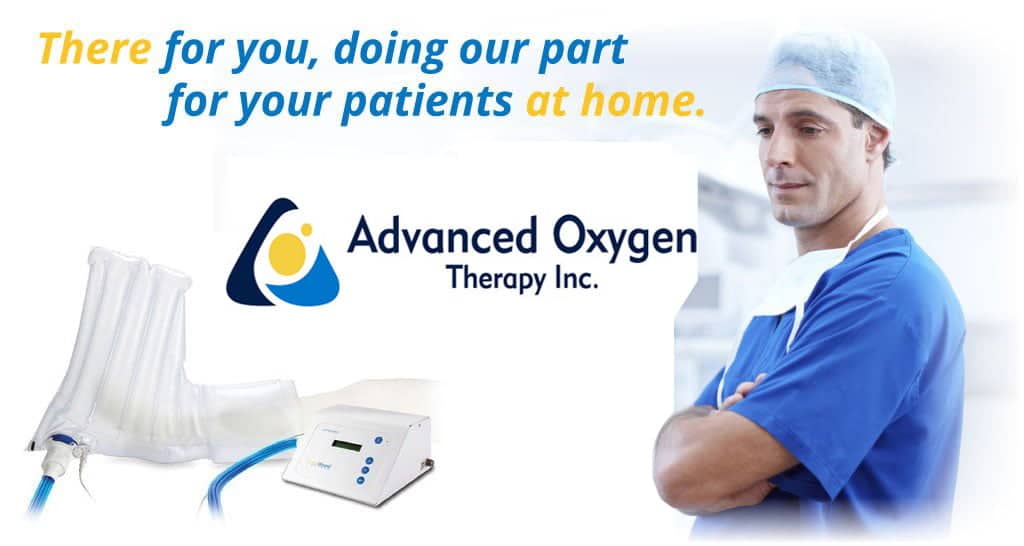TWO2 therapy offers a solution that is unique to the wound care space. Once ordered by the prescriber and set-up by our care team, it is applied by the patient at home, without the need for any clinic visits related to its utilization. This means patients can receive limb-saving therapy without being subjected to the risks associated with healthcare facility visits required for the application of alternate treatment options. In addition, AOTI’s patient care team provides the prescriber complimentary Telehealth information that includes wound images to enable them to effectively track wound progress remotely.
“I could not be prouder of my entire team as they unselfishly perform their essential functions supporting the treatment of patients on TWO2. We see this as our ethical responsibility and are committed to help as many patients as possible stay out of hospital and heal safely at home. In so doing, we hope this also provides some relief to our heroic overextended frontline medical providers.” stated Dr. Griffiths, CEO and President of AOTI Inc.
Wound care patients are classified by the Centers for Disease Control and Prevention (CDC) as Higher Risk for serious illness from COVID-19, due to their numerous co-morbidities, which commonly include such illnesses as Diabetes, Heart and Respiratory disease. Resultantly, these patients have been advised to isolate themselves in their homes in order not risk infection by the corona virus.
Additionally, many of wound care centers across the nation have temporarily closed their outpatient clinics, in an effort to limit exposure and to free up precious healthcare resources to deal with the torrent of patients presenting with acute symptoms of COVID-19, this will result in many chronic wound patients receiving very limited maintenance care, something that is likely to persist through this pandemic.
On the frontline of the pandemic at Wyckoff Heights Medical Center in Brooklyn, NYC, podiatric surgeon, Dr. Ronald Guberman, commented; “By treating patients with TWO2 at home during this crisis, we have been able to not only help heal their wounds, but due to the clinically proven antimicrobial properties of this therapy 1, greatly lessen their risk of developing infections that commonly result in emergency department visits, hospital admissions and even amputations. All things we are desperately trying to avoid.”

